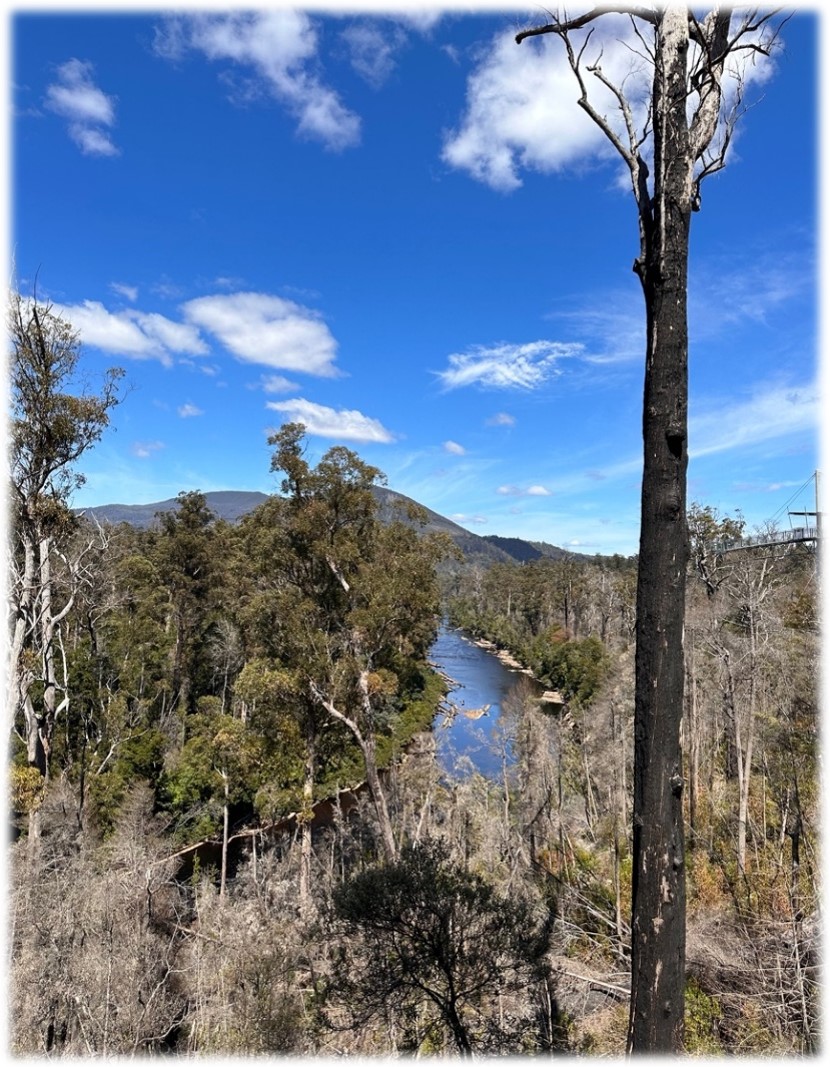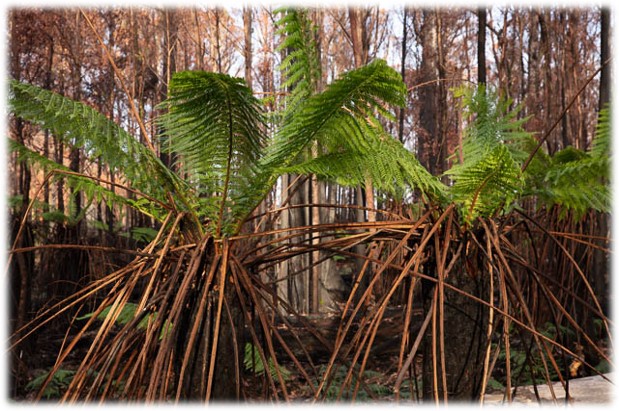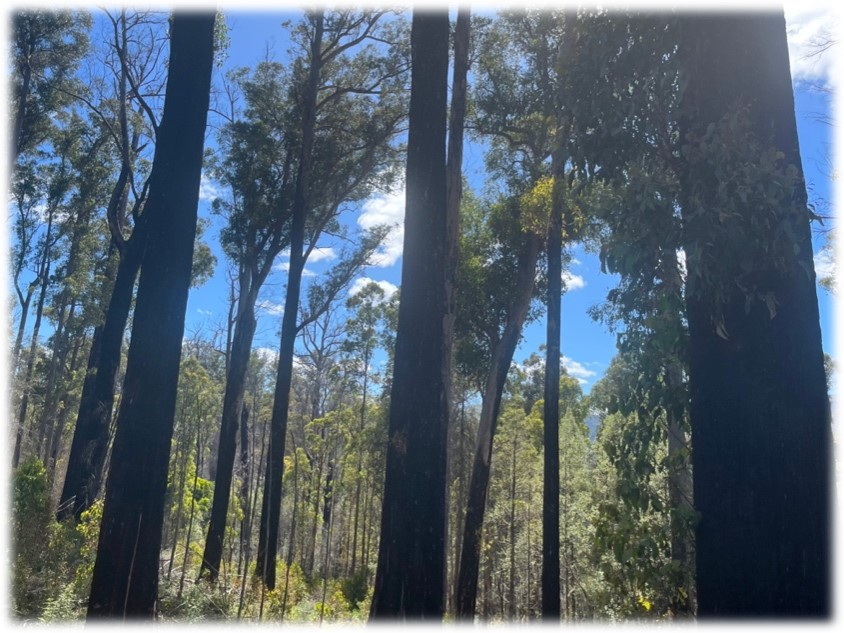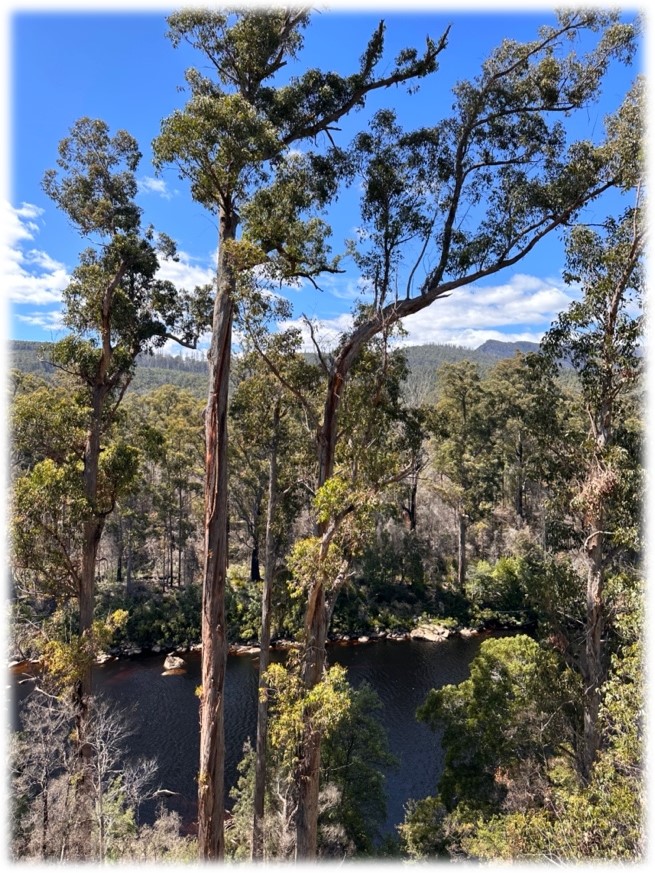by Julia Holz
In January/February of 2019, a bushfire occurred in the Tahune Forest Reserve of Tasmania which is where we observed the new growth and aftermath four years later. Due to climate change, the world is seeing rising temperatures and more extreme weather conditions. This 2019 bushfire was ignited due to dry lightening strikes. The bushfire was then prolonged due to the hot, windy, and dry weather conditions of the Australian summer. This was the warmest and driest Summer on record for Tasmania, and this bushfire was a concern for Tasmania for around a month. The highest scale of the fires was when more than 2.5% of Tasmania was burnt or burning.
Forests that are overgrown and have too thick of vegetation serve as a fuel or catalyst for the bushfires. Post bushfires, arborists and firefighters walk through the burnt forests to assess what should be done to ensure the safety of others walking through in the future. Specifically, at the Tahune Airwalk, arborists worked intensely to cut down branches and, if necessary, trees that were weakened by the fire and served as a threat by having the potential of falling down. These arborists and firefighters worked tirelessly, because a large portion of Tasmania’s economic success relies on tourism. When places like the Tahune Airwalk are deemed as unsafe and are not open to the public, Tasmania’s economy takes a hit.
With there being a plethora of different plant species in the bush, each species has differing likelihoods of surviving through bushfires or not surviving. Additionally, some species contribute more or contribute less to being a fuel for the fire when it’s occurring.The Blue Gum Eucalyptus tree is a species that is in the Tasmanian bush. This Eucalyptus is one of the most flammable plants to exist.

The bark of the eucalyptus is the contributing factor to its flammability. The bark of the blue gum eucalyptus is very stringy and highly flammable; on hot days one can even smell their oil due to the outer bark heating up. This stringy bark sheds from the trunk easily and once the fallen bark is shed in a bushfire it catches fire immediately. This means the eucalyptus is shedding fuel for fire constantly and creating a buildup of fuel on the forest floor.
Despite the eucalyptus’ highly flammable bark, the tree itself is extremely fire resistant. The eucalyptus’ fire-resistant capabilities are due to the fact that it has such stringy and loose outer bark. When on fire, the outer bark burns quickly and falls off the trunk and allows for the fire to spread elsewhere before genuinely burning the actual trunk of the tree. Additionally, the layer of bark of the eucalyptus under the stringy flammable bark is extremely thick and fire has a rejuvenating affect that incites new sprouts all along the trunk post fires. Another example of a plant species that is resilient through bushfires is the Dwarf Palmetto (Sabal minor). With this variation of palm, since it is fairly short, its germination takes place underground. This means that the heart of the plant remains underground, protected from the fires. So, when a bushfire occurs just the leaves of this palm are burned and can regrow its leaves post fire. Both of these plant species, the eucalyptus tree and palm, have obtained these lifesaving characteristics through evolution.

Lastly, bushfire prevention in residential areas is also an important aspect when speaking of bushfires. These tips can be life and house saving when fires are threatening the area. Some recommendations are to remove all flammable materials that are in direct contact with one’s house such as vegetation, create empty spaces between vegetation that could possibly serve as a blocker when a fire occurs, and plug gaps in your house to prevent the spread of the fire. Overall, with the increasing threat of climate change and higher temperatures, bushfire management is an important issue to be aware of when one is living around forests as they do in Tasmania.
Key Takeaways
- Due to climate change, increasing temperatures, an increase in extreme weather events and more, bushfire management is an increasingly important issue in many places, not just Australia.
- Arborists, firefighters, and clearing out post fires are necessary for the safety of others and health of the bush.
- Through evolution, many plant species have obtained traits to aid in survival through bushfires over many generational years.
- The little tips and tricks you can do in residential areas could save your life or your house.

